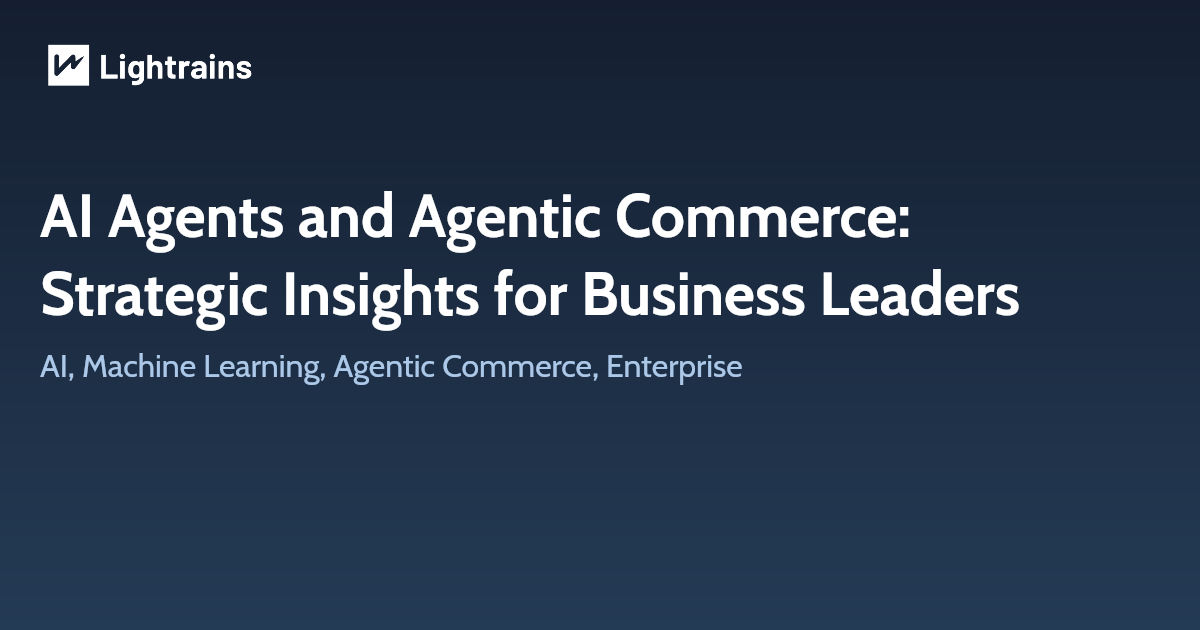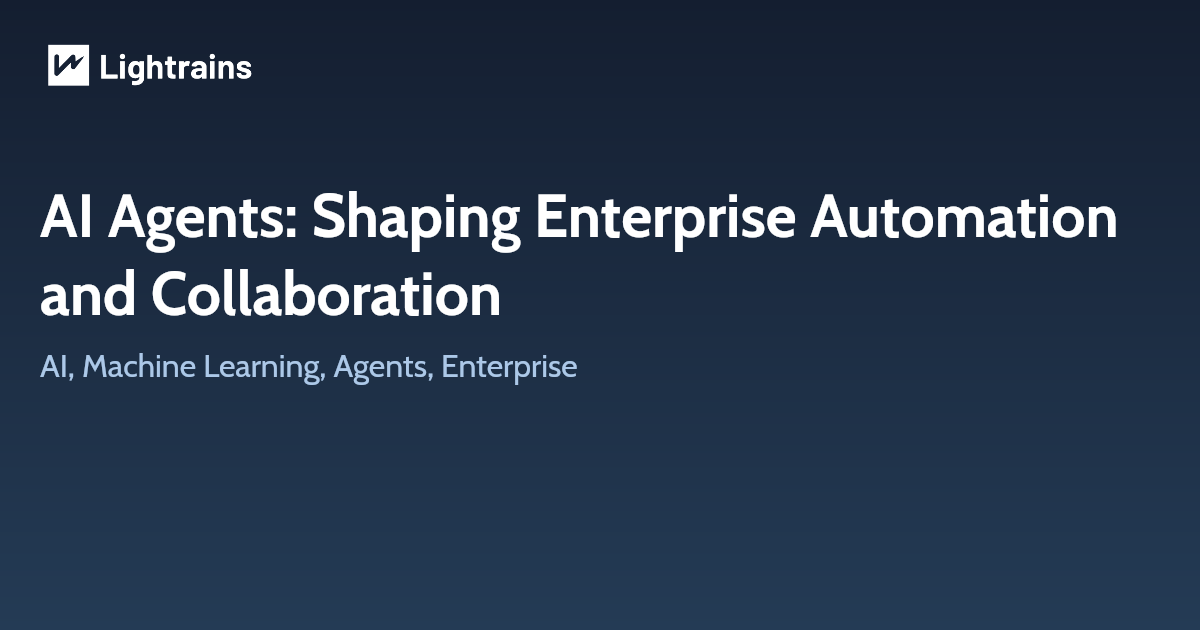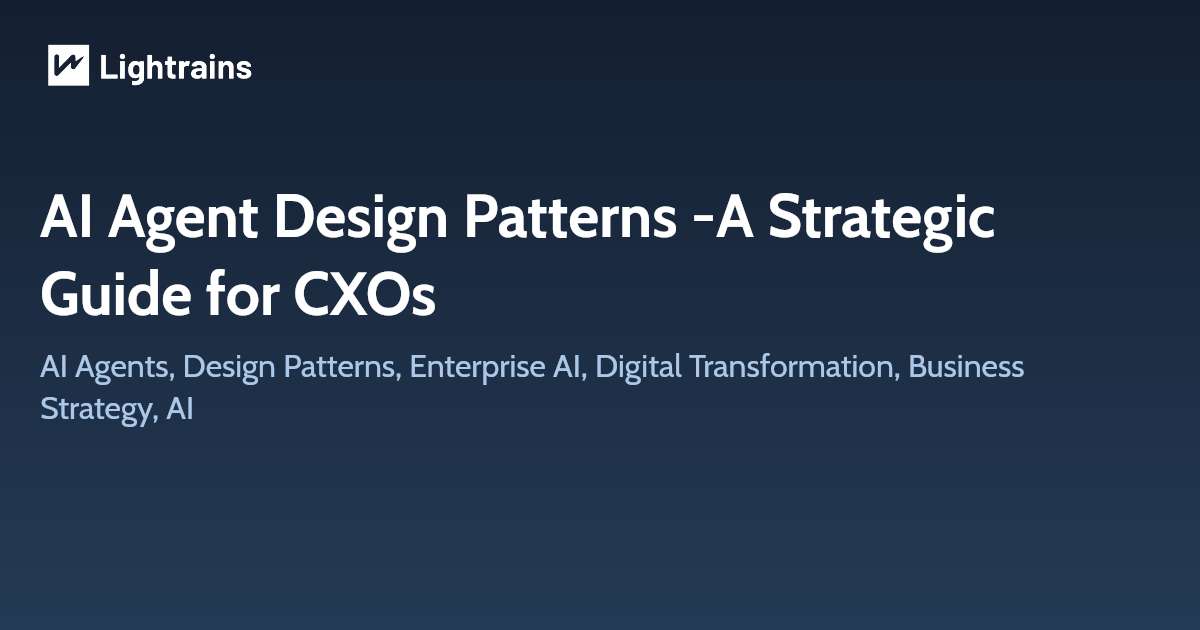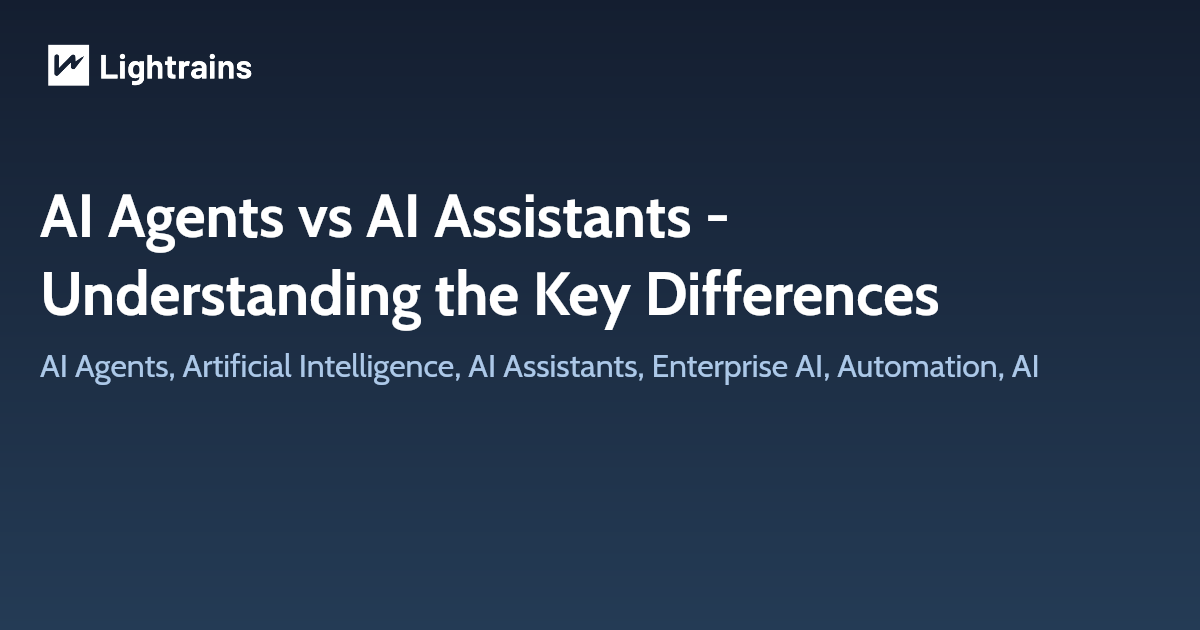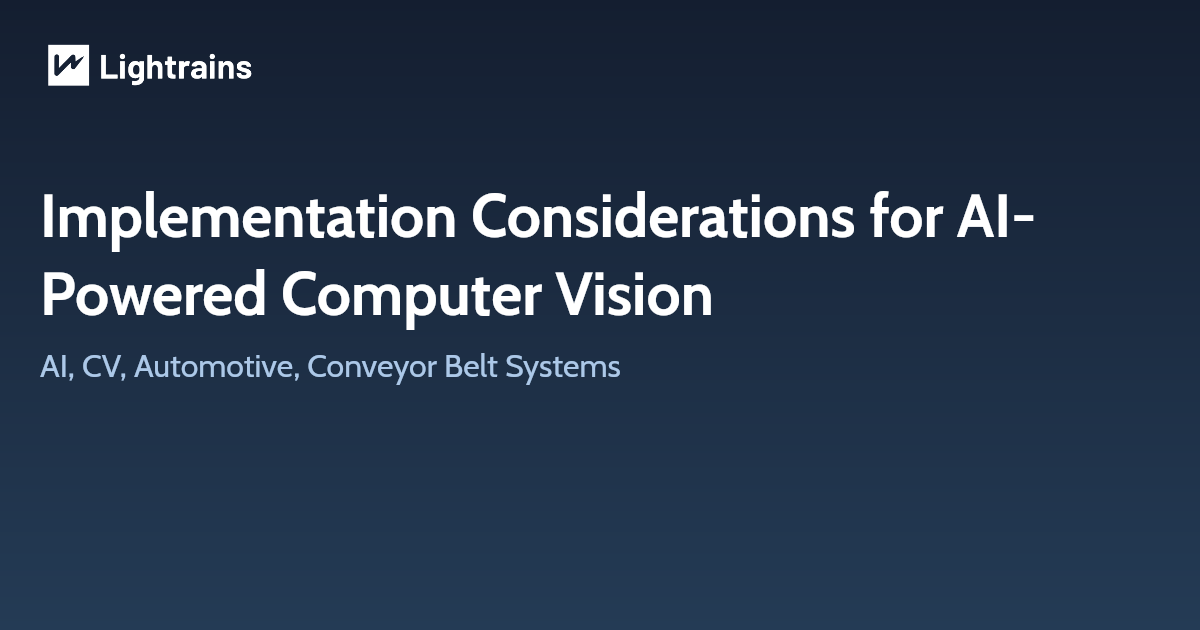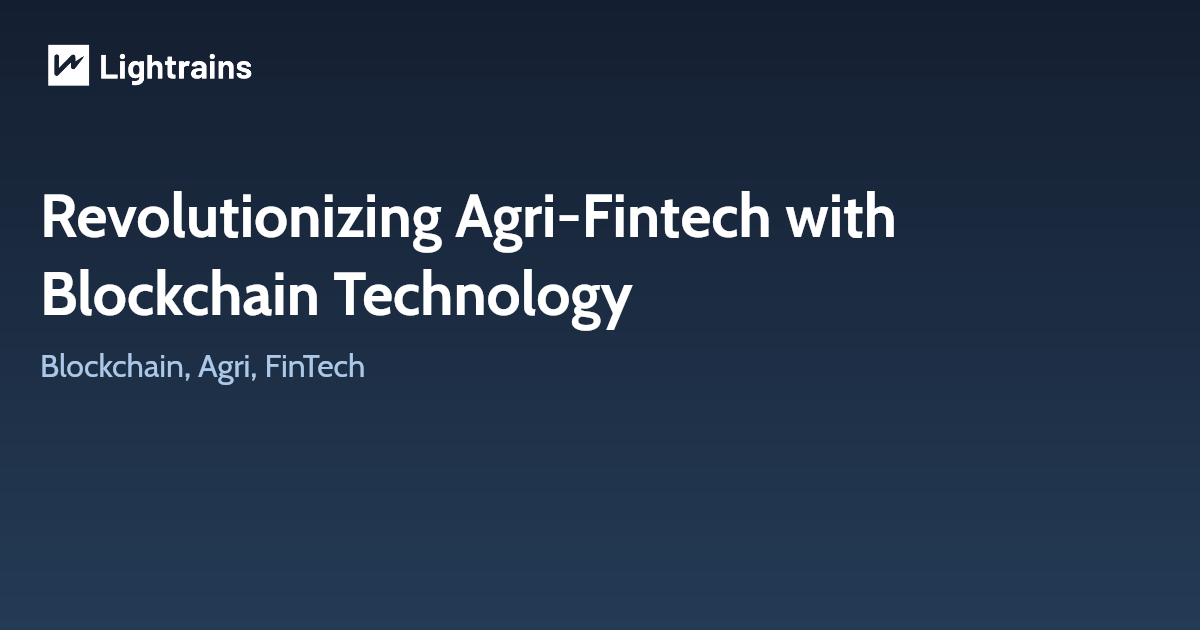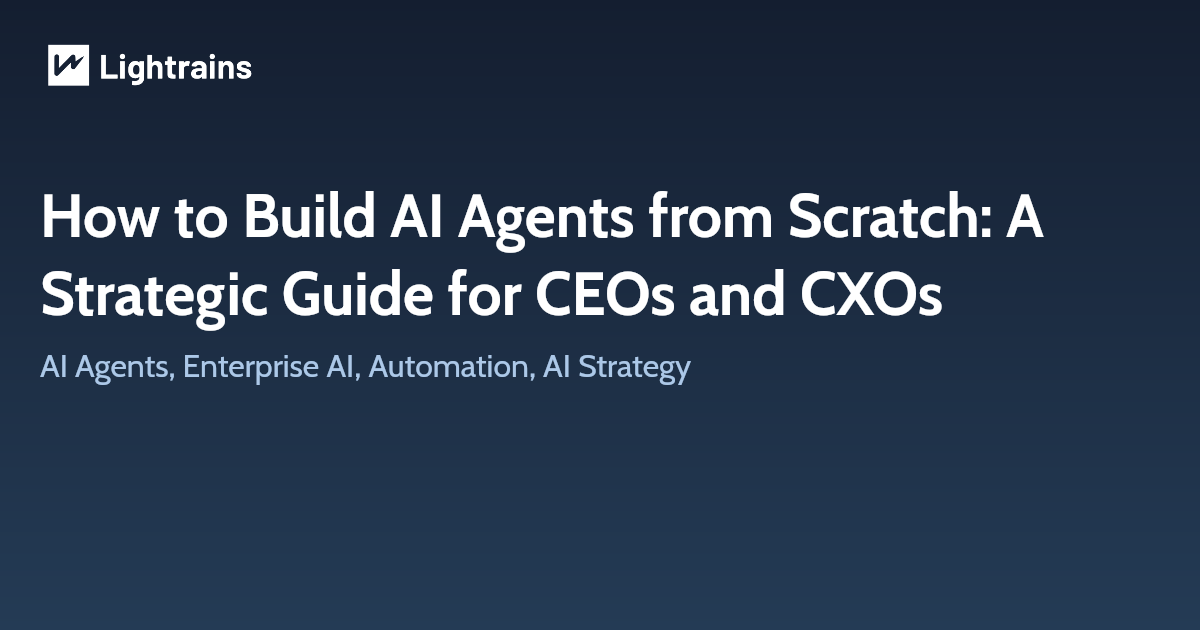
AI agents are no longer experimental they’re becoming the foundation of modern digital operations. From customer support to R&D acceleration, intelligent agents can automate reasoning, decision-making, and personalized communication at scale.
But most organizations still don’t know how to design one effectively.
This guide breaks down a practical, nine-step roadmap to help CEOs, CTOs, and CXOs understand the structure, technology, and strategy behind building robust AI agents from scratch.
At Lightrains, we’ve helped enterprises and startups alike design scalable AI ecosystems, connect them with existing cloud infrastructure, and deploy them as production-ready tools that drive measurable business outcomes.
1. Define the Agent’s Role and Goal
Every great system starts with purpose. Ask three questions:
- What business problem does the agent solve?
- Who benefits from it?
- What kind of output does it produce?
Think beyond automation. Define agency.
Example: a clinical assistant that reads X-rays, explains findings, and speaks results improves patient outcomes not just workflow speed.
For a retail CEO, it might be a shopping advisor. For a CFO, a financial insight companion. For a COO, a decision-making co-pilot that summarizes dashboards and detects anomalies.
If you’re still identifying the right AI use case, our AI Strategy Consulting helps map your internal workflows and data readiness to uncover where autonomous agents can bring the highest ROI.
2. Design Structured Input and Output
Most failed AI projects share a common flaw: unstructured chaos. AI agents should operate like APIs receiving structured input and producing reliable, parseable output.
- Use Pydantic AI or LangChain Output Parsers to define schemas.
- Avoid messy free text or unpredictable formats.
- Treat each interaction as a contract between human and machine.
When data formats are defined upfront, the agent becomes predictable, scalable, and testable across teams.
At Lightrains, we standardize schema-driven agent design as part of our AI Systems Architecture service ensuring every agent you build aligns with your existing tech stack and compliance framework.
3. Prompt and Tune the Agent’s Behavior
AI’s intelligence comes from its prompt engineering and fine-tuning strategy. You can shape the agent’s “personality” and reasoning through:
- Role-based prompts (define tone, purpose, and context)
- Prompt tuning or prefix tuning (train the system to stay consistent)
- Behavior simulation (test how it responds under uncertainty)
Tools: GPT-4, Claude, and OpenAI’s Prompt Tuning APIs
Result: an agent that performs like a trained employee consistent, aware, and adaptable.
Our Applied AI Development team helps enterprises move from static prompts to tuned, domain-specific models, integrating proprietary data while maintaining safety and reliability.
4. Add Reasoning and Tool Use
Static models are limited. Real-world agents need reasoning and access to tools.
Implement frameworks like:
- ReAct (Reason + Action) for logical decision steps
- Chain-of-Thought reasoning for transparent problem solving
- External tools (web search, code interpreter, or custom APIs)
This combination transforms AI from a text generator into a capable decision partner.
Example: A logistics agent can analyze delayed shipments, pull live weather data, and recommend route changes on its own.
We integrate such logic using our LangChain + OpenAI Frameworks expertise, allowing organizations to connect reasoning agents with APIs, CRMs, and internal databases securely.
5. Structure Multi-Agent Logic (If Needed)
Complex enterprises often require multiple specialized agents working together. Use orchestration frameworks like CrewAI, LangGraph, or OpenAI Swarm to define clear roles:
- Planner: breaks tasks into sub-goals
- Researcher: gathers insights
- Reporter: synthesizes and delivers results
These agents can operate in parallel, exchange structured data, and escalate decisions only when needed just like human teams.
Our AI Orchestration Services help enterprises set up multi-agent pipelines with transparent communication channels and traceable decision logs critical for governance and auditing.
6. Add Memory and Long-Term Context (RAG)
AI agents that forget past interactions lose strategic value. Memory adds continuity, personalization, and trust.
Options include:
- Summary memory for quick context recall
- Vector memory (RAG) using ChromaDB, FAISS, or Zep
- Conversational memory for user-specific context
For example, a sales AI that recalls prior deals, objections, or pricing discussions creates a real sense of continuity for clients.
Lightrains builds Retrieval-Augmented Generation (RAG) systems that connect securely to enterprise databases and CRMs integrating ChromaDB and Pinecone for long-term knowledge retention and instant recall.
7. Add Voice or Vision Capabilities (Optional)
Multimodal agents are the next leap.
- Voice: Integrate ElevenLabs for lifelike text-to-speech.
- Vision: Use GPT-4V or LLaMA-3.2 for image understanding.
Imagine a maintenance AI that “sees” damaged machinery through camera feeds or a personal concierge agent that speaks naturally to guests.
8. Deliver the Output in Human or Machine Format
Output defines usability. Choose how the system communicates insights:
- PDF or Markdown reports for leadership summaries
- JSON for integrations with internal APIs
- Real-time dashboards for operational visibility
Tools like Pydantic AI or LangChain Output Parsers ensure outputs stay structured and traceable.
9. Wrap It in a UI or API
The final step turns a back-end brain into a usable product. You can:
- Build interactive dashboards with Streamlit or Gradio
- Expose APIs using FastAPI or Next.js edge functions
- Integrate directly into enterprise systems via SDKs
This step converts internal intelligence into customer-facing innovation.
Our Product Engineering Team builds AI-native applications that combine design precision, backend performance, and secure deployment turning prototypes into scalable digital products.
Why This Matters for CXOs
Building AI agents is not a technical exercise it’s an organizational capability. For leaders, the key questions are:
- How can autonomous agents reduce operational load?
- Where can they enhance decision-making speed and precision?
- What governance and ethics guardrails should be in place?
The companies that answer these early will lead the next wave of AI-driven transformation.
Lightrains partners with forward-looking organizations to integrate AI governance, data ethics, and human-AI collaboration frameworks ensuring responsible deployment from day one.
Where to Start
If your organization is exploring AI transformation, digital twins, or cognitive automation, start by identifying one high-impact workflow customer queries, compliance summaries, or product analytics and build a pilot agent around it.
Lightrains specializes in designing and deploying custom AI agents with structured reasoning, scalable architectures, and secure API integration. We work with forward-thinking leaders who want to turn AI from hype into business intelligence.
Get in Touch
Start with a discovery workshop to map where autonomous agents fit into your strategy. Visit Lightrains.com/consulting to learn more or book a session with our AI architecture team.
This article originally appeared on lightrains.com
Leave a comment
To make a comment, please send an e-mail using the button below. Your e-mail address won't be shared and will be deleted from our records after the comment is published. If you don't want your real name to be credited alongside your comment, please specify the name you would like to use. If you would like your name to link to a specific URL, please share that as well. Thank you.
Comment via email